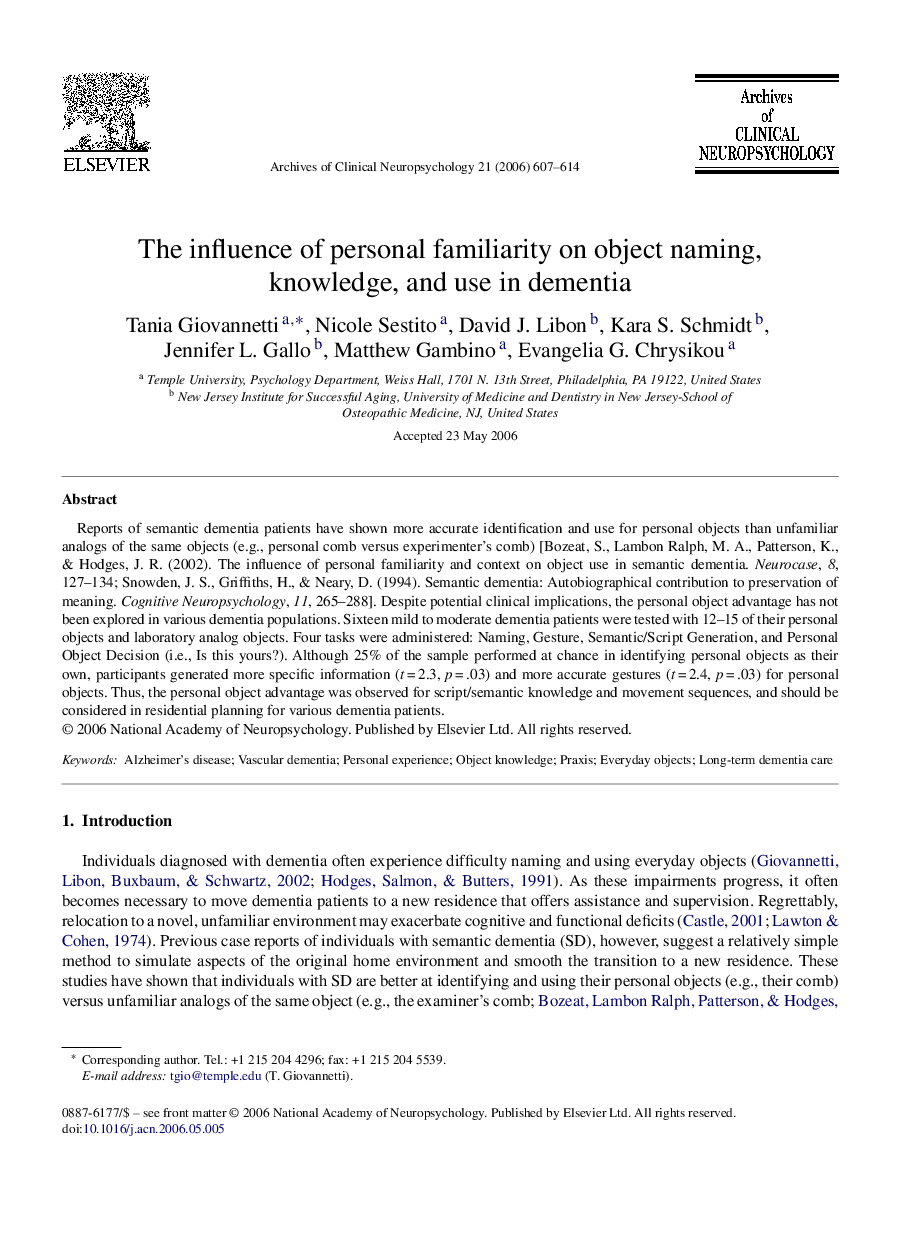| Article ID | Journal | Published Year | Pages | File Type |
|---|---|---|---|---|
| 901069 | Archives of Clinical Neuropsychology | 2006 | 8 Pages |
Reports of semantic dementia patients have shown more accurate identification and use for personal objects than unfamiliar analogs of the same objects (e.g., personal comb versus experimenter's comb) [Bozeat, S., Lambon Ralph, M. A., Patterson, K., & Hodges, J. R. (2002). The influence of personal familiarity and context on object use in semantic dementia. Neurocase, 8, 127–134; Snowden, J. S., Griffiths, H., & Neary, D. (1994). Semantic dementia: Autobiographical contribution to preservation of meaning. Cognitive Neuropsychology, 11, 265–288]. Despite potential clinical implications, the personal object advantage has not been explored in various dementia populations. Sixteen mild to moderate dementia patients were tested with 12–15 of their personal objects and laboratory analog objects. Four tasks were administered: Naming, Gesture, Semantic/Script Generation, and Personal Object Decision (i.e., Is this yours?). Although 25% of the sample performed at chance in identifying personal objects as their own, participants generated more specific information (t = 2.3, p = .03) and more accurate gestures (t = 2.4, p = .03) for personal objects. Thus, the personal object advantage was observed for script/semantic knowledge and movement sequences, and should be considered in residential planning for various dementia patients.
